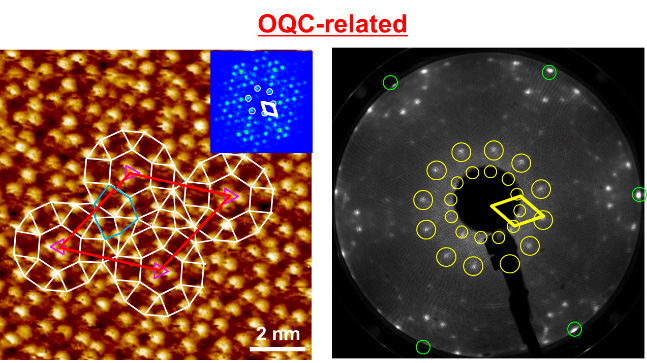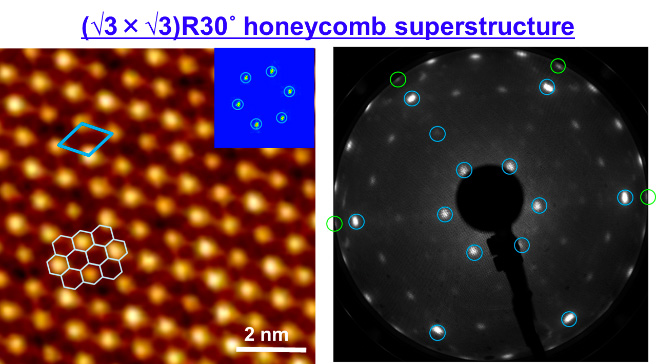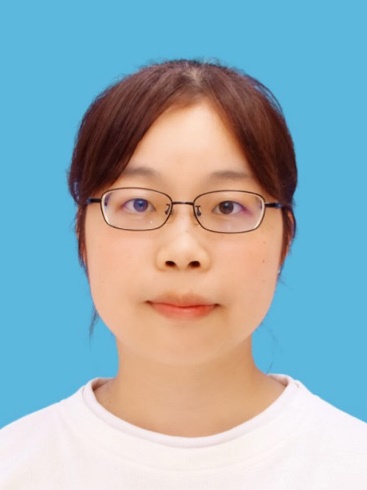SEMINAR 2025
Growth of quasicrystal-related and honeycomb structure of Ce-Ti-O ultra-thin films on Pt(111)
| Speaker | Xu Li, Nagoya University, Japan |
| Date/Time | Thursday, 20 Feb, 11am |
| Location | S11-02-07 |
| Moderator | A/Prof Wang Xuesen |


Figure 1 STM images and LEED patterns of OQC-R structure and honecom structure of Ce-Ti-O ultra-thin films on Pt(111).
Abstract
Quasicrystals, which don’t have translational periodicity, but have rotational symmetries such as 5-fold, 10-fold, or 12-fold, were discovered in 1984 by D. Shechtman. Recently, oxide quasicrystal (OQC) with dodecagonal clusters was reported to be prepared from ultrathin Ba-Ti-O and Sr-Ti-O films on Pt(111). In my talk, the rare earth element Ce is used to replace the Ba/Sr metallic elements, to prepare the Ce-Ti-O ultra-thin films on Pt(111).
The Ce-Ti-O ultra-thin film was prepared by depositing Ce and Ti on Pt(111), following with annealing in oxygen atmosphere and vacuum. An arrangement of dodecagonal clusters consisted of triangles and squares were locally observed. In addition, the appearance of trapezoids led to the structure to be recognized as an OQC-R structure.
By additional Ti deposition on OQC-R ultra-thin film, a (√3×√3)R30˚ superstructure is observed, regarding as a honeycomb superstructure by STM image. Furthermore, density functional theory calculations and photoelectron holography were used to confirm the atomic structure.

Biography
This is Xu Li, currently a Ph.D. candidate in the Department of Energy Engineering at Nagoya University. She graduated from the School of Energy Science at Central South University in China in 2018 and got a Master’s degree from Nagoya University in 2022.
She is working on Ba-Ti-O, Ce-Ti-O, and Yb-Ti-O ultra-thin films, especially their growth and the structural analysis of oxide quasicrystals, oxide quasicrystal-related structures, oxide approximants, and honeycomb superstructures on Pt(111), aims to contribute to the understanding of the physical properties of oxide quasicrystal thin films while exploring their potential applications
